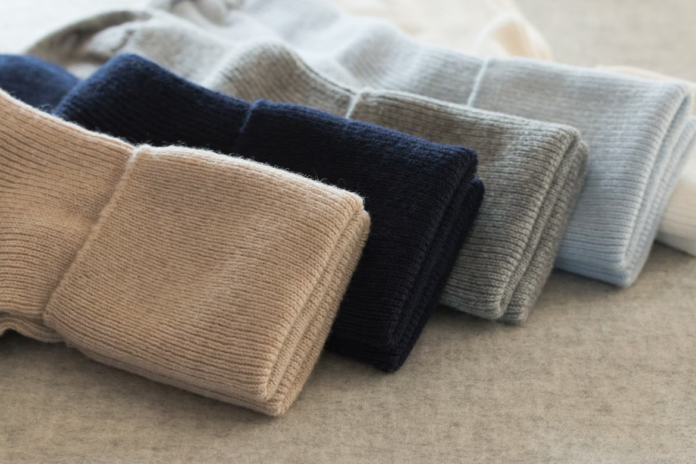It’s no secret that diabetes is a serious condition. Diabetes affects millions of Americans. And as if that wasn’t bad enough, diabetes can also lead to several other health complications, including heart disease, stroke, and even blindness. One way to help manage diabetes is by wearing diabetic socks. Diabetic socks are designed to improve blood circulation in the feet and prevent common problems associated with diabetes, such as nerve damage, skin ulcers, and foot infections.
Sounds great so far, right? But are diabetic socks living up to all the hype? Let’s take a closer look at diabetic socks and find out if they’re worth the investment.
What Are Diabetic Socks?
Diabetic socks are socks that have been specifically designed for people with diabetes. They’re usually made from a special material that helps to improve blood circulation in the feet. In addition, diabetic socks often have extra padding in the toes and heels to protect against foot ulcers and other problems. When looking to buy diabetic socks made in the USA, make sure that the socks have the American Diabetes Association (ADA) seal of approval. This ensures that the socks meet ADA standards for quality and safety.
Additionally, diabetic socks are usually available in a variety of sizes and styles to accommodate different foot shapes and sizes.
The Different Types Of Diabetic Socks
Diabetic socks come in a variety of different styles, each with its own set of features. For example, some diabetic socks are designed to be knee-high or thigh-high. These socks are ideal for people who have diabetes-related circulation problems. Other types of diabetic socks come with built-in arch support or extra cushioning in the toes and heels. And still, other diabetic socks are specifically designed to help prevent foot ulcers. No matter what your needs are, there’s a type of diabetic sock that’s right for you.
Diabetic Foot Problems
So, now that we know more about diabetic socks, here’s why you need them. Diabetic foot problems are a common complication of diabetes. About half of all people with diabetes will have some type of foot problem during their lifetime. Foot problems can lead to serious complications, including the mentioned ulcers, infections, and even amputation. There are two main reasons why people with diabetes are more likely to have foot problems:
- Diabetes can cause nerve damage (neuropathy). This can cause numbness in your feet, which makes it harder to feel pain or injuries. As a result, you may not notice a minor injury, which can then become infected.
- Diabetes can also reduce blood flow to your feet. This can make it harder for an infection or ulcer to heal.
That’s why people with diabetes need to take extra care of their feet, and that includes wearing these socks, and here’s how they work.
How Do Diabetic Socks Work?
Diabetic socks work by improving blood circulation in the feet. The increased circulation helps to prevent common problems associated with diabetes, such as nerve damage, skin ulcers, and foot infections. The socks are usually made of a material that wicks away moisture, which helps to keep the feet dry and prevents fungal growth. Diabetic socks often have special padding that helps to protect the feet from blisters and pressure sores.
What Are the Benefits of Diabetic Socks?
There are many potential benefits of diabetic socks, including improved circulation, reduced risk of foot problems, and increased comfort. Improved circulation is perhaps the most important benefit, as it can help to prevent serious complications such as nerve damage, skin ulcers, and infections. The added padding in diabetic socks can also help to relieve pain and prevent blisters and pressure sores. In addition, the moisture-wicking fabric helps to keep the feet dry and comfortable.
For example, if you are prone to sweaty feet, you may find that diabetic socks help to reduce moisture and keep your feet feeling fresher. Finally, the loose fit of diabetic socks helps to accommodate swollen feet and can also be helpful for people with bunions or hammertoes.
Are Diabetic Socks Right for Me?
If you have diabetes, you may be wondering if diabetic socks are right for you. The answer is that it depends on your needs. If you have diabetes-related circulation problems, then knee-high or thigh-high diabetic socks may be a good option for you. If you’re looking for extra cushioning and support, then arch-support or toe/heel padding diabetic socks may be a better choice. And if you’re at risk for foot ulcers, then anti-ulcer diabetic socks may be the best option. Ultimately, the decision of whether or not to wear diabetic socks is up to you. However, if you have diabetes, it’s worth considering.
Other Sock Options To Consider
In addition to diabetic socks, there are other options to consider if you have diabetes. For example, you may want to try compression stockings or wraps. Compression stockings are designed to help improve circulation and reduce swelling. They’re available in a variety of styles, including knee-high, thigh-high, and pantyhose. Wraps, on the other hand, are usually worn around the calf or ankle and can also help to improve circulation and reduce swelling. If you have diabetes, talk to your doctor about which option is right for you.
What You Will Need Alongside The Socks
Socks are not the only thing you need to consider if you have diabetes. You will also need to make sure you have the right shoes. Diabetic socks are designed to be worn with diabetic shoes. These shoes are usually made of soft, breathable materials and have extra depth to accommodate foot swelling. They also have a wider toe box to provide more room for your toes and prevent foot problems. If you have diabetes, it’s important to choose the right shoes and socks to help keep your feet healthy.
Diabetic socks offer a variety of potential benefits for people with diabetes. They can help improve circulation, reduce the risk of foot problems, and increase comfort. However, it’s important to choose the right sock for your needs and to pair them with the right shoes. If you have diabetes, talk to your doctor about which socks and shoes are right for you.















